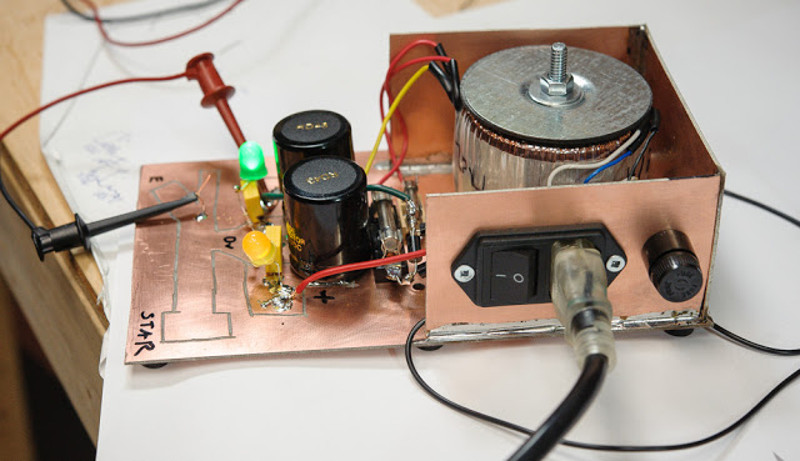Power supply design is a broad field, requiring entirely different tools and techniques depending on what you’re working with. Creating a low-cost and compact mobile phone charger is a completely different ball game to designing the power supply for a medium-sized laser cutter, for example. [Vasily Ivanenko] has been designing a power supply for a clean jazz guitar amplifier, and has helpfully documented the process.
For a guitar amplifier which prides itself on clean tones, it’s highly important to avoid all sources of noise, to let the natural sound of the guitar come through as clearly as possible. [Vasily] notes that this requires careful component selection, as well as consideration of the placement of key parts and the construction of the power supply. Strategies to minimise inductive and capacitive coupling are discussed, as well as grounding schemes to minimise undesirable hum or buzz during amplifier operation.
The article is the first of a three part series, in which [Vasily] will then cover the full design of the guitar amp, including a focus on the design of the power amplifier stage. We’ve seen some of [Vasily]’s work before, like this discussion of how to build high quality audio amplifiers for ham radio use.
















With the risk of pissing on his parade: he’s meticulously walking through a really old and straightforward design of a standard power rail. Additionally, for the pre-regulator he’s constructing his own voltage regulator with a zener voltage reference, which would probably work better if he had used a bulk standard 78xx regulator.
on the other hand: he was pointing out some important things such as star grounding, and these circuits have been around for so long for the simple reason that they work.
I have been reading up on “audio” power supplies and everything I read about high-quality audio power supplies is to use star grounding.
Is there a single book on the theory as to why this is better than a large and properly designed groundplane?
I can find theory on groundplanes; tons, with formulas on copper thickness, trace width, spacing, current calculations…
Maybe here there is someone who has a pdf collecting dust somewhere, or a book on a shelf with a title and author?
I will build it if I need to, but the not knowing why is bothering me endlessly.
I LOVE Vasily’s site, been reading it for years!
If portability is the goal, wouldn’t a better way be to use a 48V telecom PSU and a class D amplifier module?
With all the other cheap switch mode supplies likely to exist at home, you would think there will be some HF input filtering…